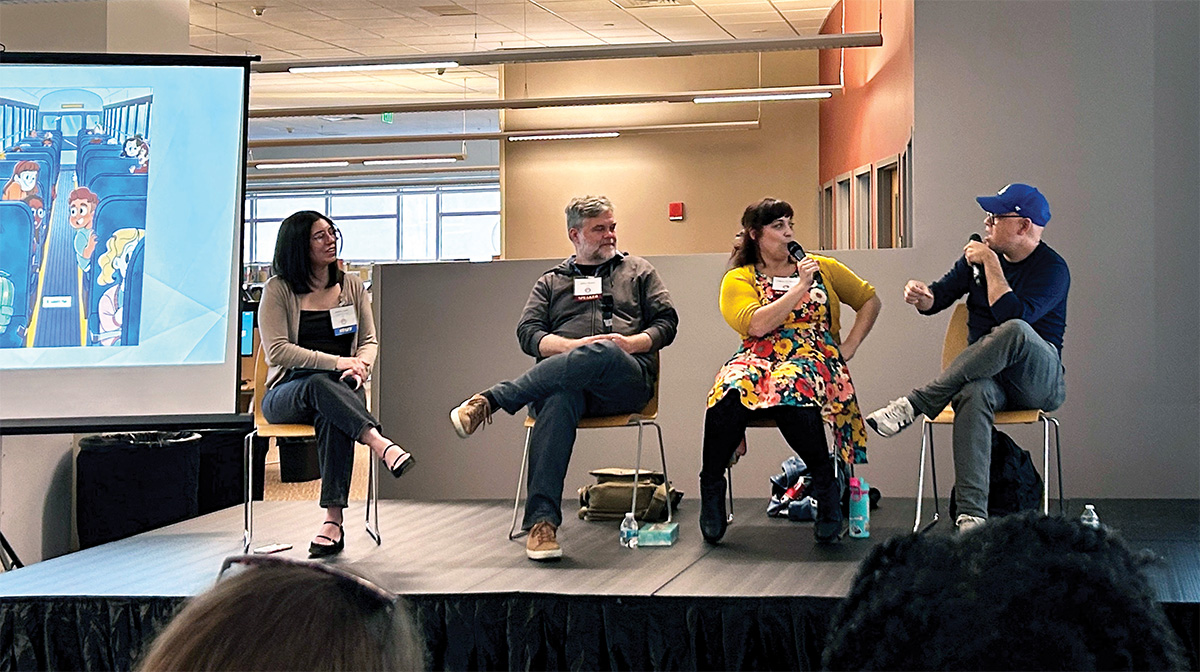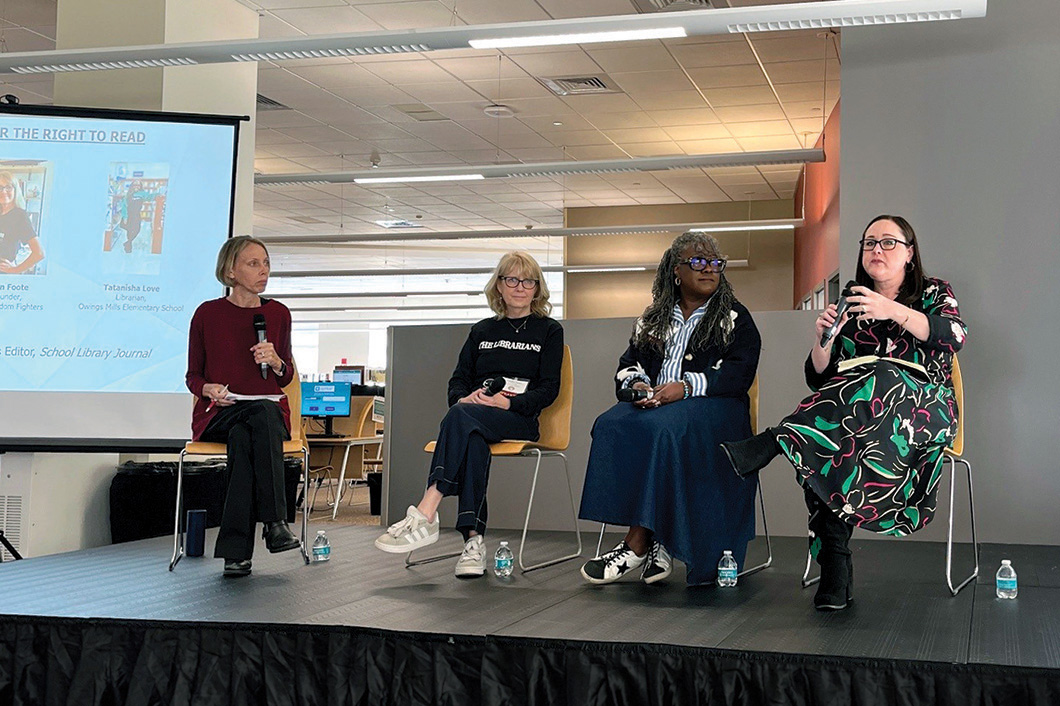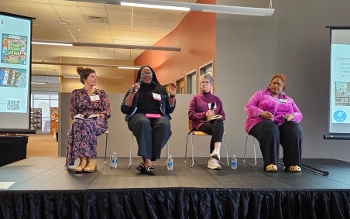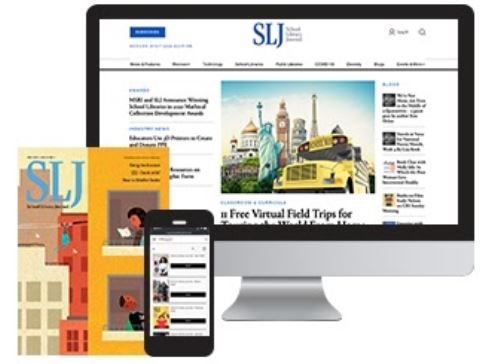Graphic Novel Creators, a Culture of Reading, and Keys to Collaboration | 2025 SLJ Summit
Highlights from the SLJ Summit panel discussions include stories from Caldecott and National Book Award winner Dan Santat, as well as tips for creating a culture of reading and collaborating with public libraries.
The 2025 SLJ Summit presented multiple panel discussions exploring topics, including legislative advocacy, creating a culture of reading, and collaborating with public libraries. Graphic novel creators Dan Santat, Jeffrey Brown, and Colleen AF Venable sat with SLJ graphic novels editor Jasmine Amiri to talk about their latest works, creating for young readers, and more.
Graphic novel inspiration
 |
From left: Jasmine Amiri, Jeffrey Brown, Colleen AF Venable, and Dan Santat |
Graphic novel creators, speaking with Amiri about their work, brought insight and laughter to the 21st annual SLJ Summit.
Santat shared background and the, at times, uncomfortable research process for his National Book Award–winning graphic memoir A First Time for Everything and discussed his work-in-progress about his parents and the “Sidekicks” series— the newest of which, Sidekicks Thick as Thieves, will be released in January.
“Sidekicks,” he said, is about more than superheroes fighting evil.
“Deep to its core, it‘s about a commitment to family,” he said. “It’s very deeply personal to me.”
The series arc takes the superhero pets into independence and toward adulthood alongside their readers.
“There does come a point in [children’s] lives where they have to stand on their own two feet, and they come to this conclusion that they can probably function as adults,” he said. “That’s really the overall story arc of ‘Sidekicks.’ It’s the evolution of these [characters] who eventually grow up…. They become different people by the end of the series.”
Brown’s newest, Hulk Teach, was inspired by a middle school visit where he noticed the incredible patience it took to teach tweens and thought, “What Marvel character would really struggle?… Then it just clicked. I was like, ‘Oh yeah, it‘d be really funny if the Hulk had to teach middle school.’”
Brown called his career writing for kids “accidental but super rewarding,” and said his process is “not much different than writing for adults.”
He did note, however, that sometimes his editor has to remove swear words.
At that, Venable laughed and added, “When I did a teen book, they made me put curse words in it!”
Writing books for kids has been a lifelong quest for Venable, who sent her first book manuscript to Scholastic at age eight.
“I’ve always wanted to be a children’s book author since I found out it was a thing,” she said.
And now she is living her “dream job,” updating Barbara Parks’s “Junie B. Jones” series into graphic novels.
“It’s a huge weight to make sure that I’m honoring Barbara, honoring this character,” she said.
When she was first approached about the idea, her initial response was no, because no one should mess with Junie B. Jones. But, it turned out, Parks’s husband Richard had read Venable’s Katie the Catsitter and seen an interview with her. Venable was told he thought that she, like his wife, was Junie B. Jones in adult form. Knowing his grandchildren were reading graphic novels, he approved remaking the series in that format, but only if Venable did it.
She accepted and set out to honor the series as she helped usher it into a more contemporary time in the visual format.
“There were originally nine illustrations per book, now there are 2,500,” Venable said. “And we’re able to explore all these one-liners she has.”
One change—there’s a cat in the graphic novels, an homage to one of the original titles.
“There’s one line in one book where she says, ‘We’re going to tell mom and dad that the cat ate it,’ said Venable. “So we have now snuck this cat into the background of every book.”
The entire project is predicated on honoring the beloved series and drawing a new generation of readers into the stories.
“We’re not trying to remake the original, we’re trying to modernize it,” she said. “But you don’t have to do very much.”
Advocacy and legislation
 |
From left: SLJ senior news editor Kara Yorio moderated a panel with Carolyn Foote, co-founder of FReadom Fighters, Tatanisha Love, former president of the Maryland Association of
|
Creating a culture of reading
At Jefferson Middle School Academy in Washington, DC, K.C. Boyd has started an Independent Reading Book (IRB) initiative with sixth graders. Just a few months into the school year, it is already a success. Students must have their IRBs with them at all times and take them out to read when finished with work in other classes. There are signs in the halls asking, “Where is your IRB?” Faculty and parents have bought in and are asking as well. Boyd booktalks a few books at the beginning of the month, and what was supposed to be a program incentivizing students to check out books once a month has turned into kids coming multiple times a week to get a new IRB.
 |
The Culture of Reading panel, from left: Christy James,
|
Boyd hopes to expand the program to seventh and eighth grades next year as she stresses its impact within the building. While administrators focus on test scores, she continues to explain the way to those results.
“We have to take time to develop these readers,” Boyd said during the panel discussion. “Once the readers are developed, the scores are going to follow.”
Boyd was joined on the panel by Christy James, district library media services coordinator, Charleston County (SC) School District; Stacey Nunn, librarian in Baltimore Public Schools; and Dorathy Winkler, librarian at Battlefield Middle School in Fredericksburg, VA.
James said one of the ways her district boosts its reading culture is by placing mini libraries in areas like the front office and nurse’s office (where she says traffic has increased since the pandemic). She stocks them with duplicates from the library collection or donated paperbacks.
Winkler hosts a faculty book club that not only has teachers talking to each other about books, but students talking to them about what they’re reading as well. It models reading for leisure into adulthood and builds relationships and opportunities for Winkler to collaborate with the building’s classroom teachers.
In her previous school, Nunn hosted a very successful Grandparents Reading Day. She stressed consistency and access to better a school’s reading culture.
“The most important thing has been keeping the library doors open,” said Nunn. “My doors are open, the lights are on.”
Collaborating with public libraries
A panel on school and public library collaborations featured Theresa Bruce, library media specialist at KIPP Harmony in the Baltimore City School District; Conni Strittmatter, youth and family engagement manager at BCPL; and Amanda Lanza, coordinator of the office of library media and instructional technology at Baltimore County Public Schools.
 |
From left: Hallie Rich, Theresa Bruce, Amanda Lanza,
|
They spoke about collaborations where the public library offers automatic library cards to students, visits schools at lunch to share their collection, or assists the district with Battle of the Books competitions.
For those schools that don’t have a relationship with their local public library branch, panelists suggested school librarians visit the branch and ask about opportunities to collaborate, along with offering ways to help them such as offering to do a summer story time, host a student art show at the branch, or give them a table at a school event. Discuss automatic library card enrollment for students, and if that is not possible with the school district, see if you can arrange a way to bring students to the branch to sign up for cards.
RELATED
The job outlook in 2030: Librarians will be in demand
The job outlook in 2030: Librarians will be in demand
ALREADY A SUBSCRIBER? LOG IN
We are currently offering this content for free. Sign up now to activate your personal profile, where you can save articles for future viewing






Add Comment :-
Be the first reader to comment.
Comment Policy:
Comment should not be empty !!!